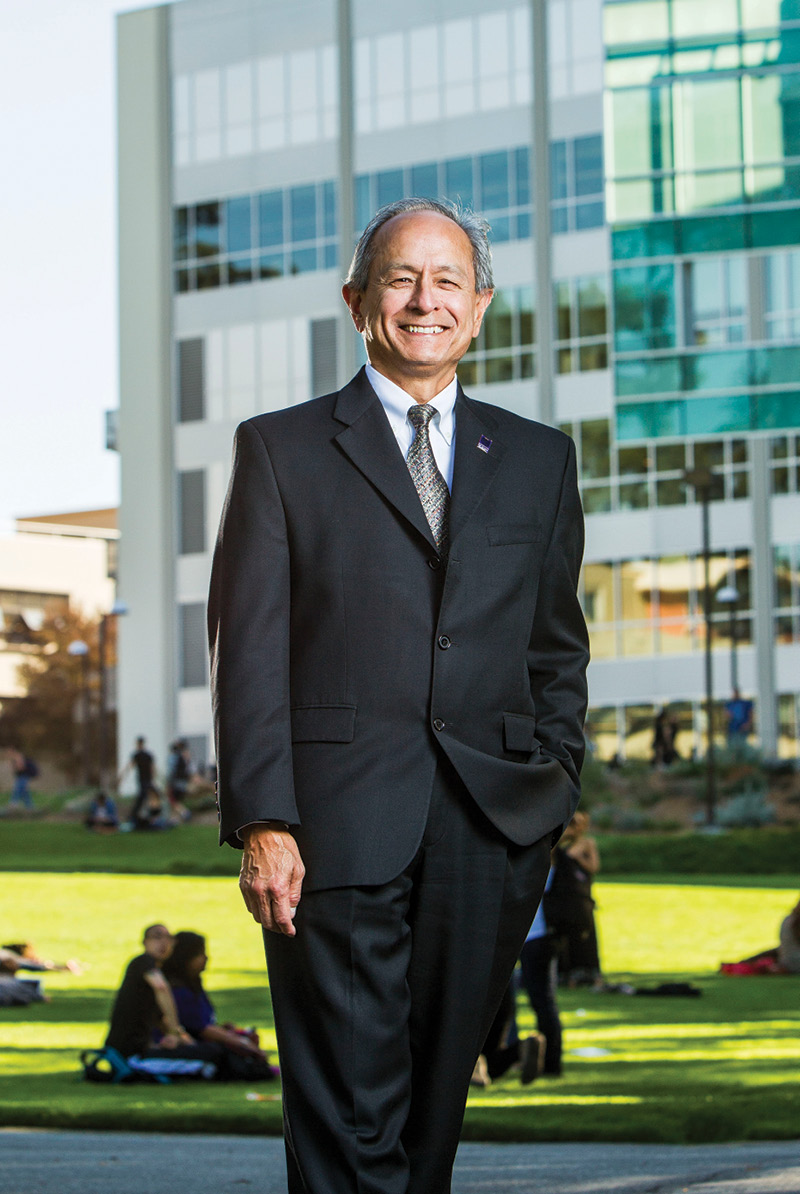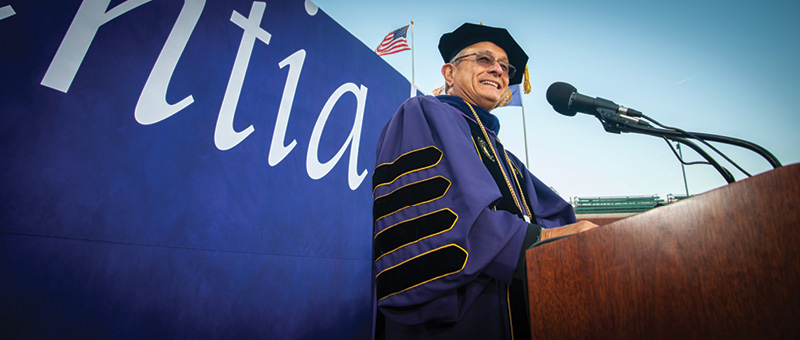President Wong reflects on his legacy and what’s next for SF State

A lot has changed for SF State since Leslie E. Wong was announced as its 13th president seven years ago. The University moved its spring Commencement ceremony from Cox Stadium to the downtown home of the Giants, Oracle Park. Work on an Academic Master Plan and Campus Master Plan was initiated to guide the University’s future growth and development. SF State launched its first comprehensive fundraising campaign, in the process netting the largest donor gifts in its history. And there was major construction on campus for the first time in years: The Mashouf Wellness Center opened in 2017, and new student housing and a state-of-the-art home for the College of Liberal & Creative Arts will be completed in 2020.
And now something else is changing. The California State University Board of Trustees will soon announce who’s been picked to be SF State’s 14th president. As President Wong prepares to end his time at the University, he sat down with SF State Magazine to discuss what his accomplished, what he’s learned and what lays ahead.
What are you most proud of having accomplished during your tenure at SF State?
When I came here, the University was facing some fundamental existential questions. Who are we? Where are we going? Do we want to change? I think we’re answering those questions. The Academic Master Plan that the provost is creating with faculty will set our academic goals and aspirations, and we have a new strategic plan to dramatically modernize the campus and update the physical facilities.
We also rebuilt the advancement department, so our fundraising capacity is way beyond what I inherited. We rebuilt the athletic department, which I refer to as the “front door” to the University. And we’ve attracted so much talent, from administrators to the 280 tenure-track faculty hired since I arrived. The teaching and research that goes on here is exceptionally strong and is getting stronger all the time.
What have been your greatest challenges?
Finding middle ground on complex, deeply felt cultural issues has been the biggest challenge. The other challenge for me has been to get the public to realize how great we are. It’s more than just marketing, it’s more than just recognition, and it’s getting better. As you pile up successes, people start to pay attention.

What excites you most about this University?
There’s a level of confidence and a “can-do” attitude. Who would have thought that in such a short amount of time we could build three new buildings when there hadn’t been any construction here, other than the library remodel, in more than 15 years? The new science building [planned for 2023] will be the fourth. I’ll have to come back to see it.
You’ve met with alumni around the world. What’s the thing that stands out?
Their pride in their diplomas is so palpable. I saw the same deep sense of pride in alums in Hong Kong, Taiwan, Europe. When you ask them what they remember the most, they say, “The world was at San Francisco State.”
What are your plans for the future?
I’ve granted myself an eight month sabbatical. I’ve been asked to be on two boards. I want to be near the grandchildren and the family. I have a long reading list. Every year I pick something new to learn that I don’t know anything about. I’ve learned how to vertically climb ice, how to survive outside, to sew, to do woodworking, how to make wine and beer and grow vegetables. I’ve built cars and started drawing. I’d like to get back to playing the piano.
Do you have any advice for the next president?
There is such a unique spirit to this place. My successor should take their time to learn how deep and consistent that is. We’re a complicated place, and we are situated in a very complicated city. There’s a lot of subtext and politics, but the commitment to people runs deep.

Any final thoughts about your time at SF State?
I think I can walk away feeling good about leaving this place better than when I found it. There’s a spirit of confidence and optimism here that will persist, and I’m proud and honored to have been a part of that.